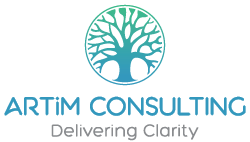It isn’t easy to get all the parts of an organisation to work smoothly together. There are just too many them and even if we could keep track of all them, they interact with each other in unpredictable ways. When we then add people to the mix, with each person bringing their own interpretation of the situation and their own agenda, alignment becomes even more difficult. No matter how hard we try we are always going to be left with things we don’t know about or can’t be sure about. So what’s the best way to proceed?
It may be hard to align organisations, but usually it is quite easy to spot areas of misalignment, where things aren’t working quite as well as we think they should. For example, it is quite common in large organisations to have different line and functional hierarchies. The sales organisation might be set up with a regional centre covering locations in a certain geographical area. Functional areas such as HR or IT might report directly to the corporate office. As information aggregates upwards within these hierarchies, it can be very difficult and time-consuming to keep the different aggregated views reconciled at all levels in the organisation.
Misalignment is much more likely in larger organisations simply because there are that many more parts involved, but there are plenty of opportunities for misalignment in smaller units as well. Consider the operational and change planning processes. The operational planning process results in the operating budget and the change planning process delivers the investment budget (though change can involve operational expenditure!). Many organisations have completely independent processes for operational and change planning. This is often because the processes are managed by different departments, but also because the two processes require different knowledge and skills. Though the change planning process affects the operational planning process, there usually isn’t much interaction between the processes. The financial statements need to combine the operational and investment budget and this can sometimes lead to surprises and last minute adjustments. But integrating the two processes to avoid this can be a challenge.
Let’s consider a situation in which we become aware of the need to improve alignment.
The first step is usually the articulation of the current situation, or the ‘as-is’. When we are documenting the as-is, we are learning about what really happens in the organisation. It is commonly assumed that we know almost all there is to know about the way we work, but it quite common for people engaging in documenting the as-is in organisations to be surprised by what they find. The articulation of the current situation may also involve some analysis to understand the cause of the misalignment. To do this we might brainstorm within a group to put together a set of cause-effect relationships, or perhaps a model, by way of explanation. The next step might be to establish goals for the intended change. For example the goal might be to fully integrate the operational and change planning processes. A clear statement of the goal might require a conversation between different stakeholders. This involves each of the stakeholders learning about the expectations of the others. The next step might be an articulation of the integrated process, the ‘to-be’, a creative, learning process. Then we might try to come up with a few alternative ways of implementing the change. To pick the best one, we would need to predict the outcomes of the alternative actions, for which we might go back and make changes to the cause-effect model we put together earlier. Finally, when implementing the changes we might keep a close watch on progress, try to understand why the change is resulting in the outcomes we observe and make adjustments or even pick another approach.
In every one of these steps, whether or not we are aware of it, we are actually engaging in some form of learning. So there does appear to be a close relationship between strategic alignment and learning. There is some recognition of the relationship between learning and strategy execution and formalised programs are now becoming available to understand and leverage the relationship. As an interesting aside, some researchers are looking at barriers to learning, i.e. what can get in the way of learning. The barriers they are talking about, such as organisational goals, roles and culture, look a lot like barriers to strategic alignment.
It makes sense then to explore the idea of learning. It turns out that learning, like most things that involve human beings, is not a simple concept. Learning that involves building a specific skill like putting a legal contract together is very different from learning how to work with a team of colleagues to reach agreement with a customer about providing services to them. In the next few posts we’ll look at different forms of learning and why strategic alignment requires using all of them.
If you are interested in learning more about organisational alignment, how misalignment can arise and what you can do about it join the community. Along the way, I’ll share some tools and frameworks that might help you improve alignment in your organisation.

